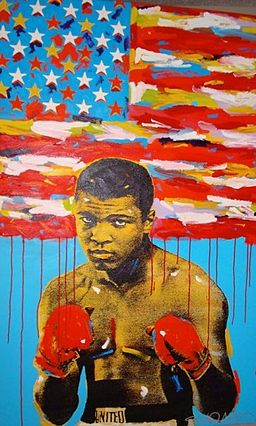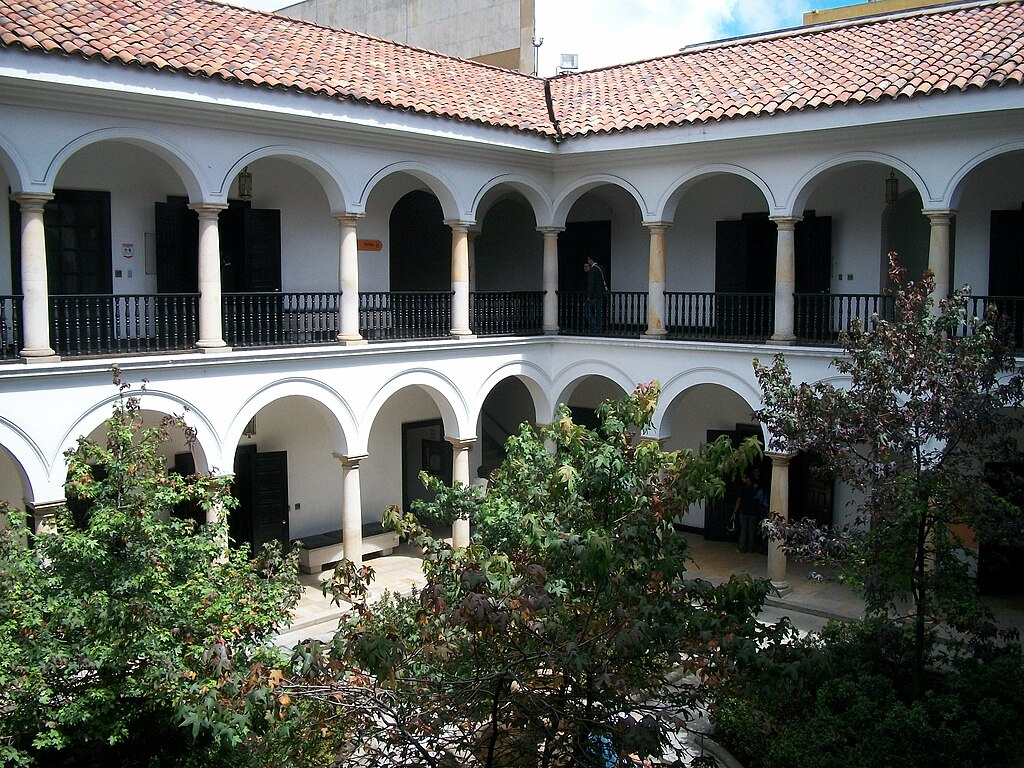
“The Battle of Anghiari” by Peter Paul Rubens, is a copy of a lost Leonardo da Vinci fresco, it depicts four Knights engaged in a battle for possession of a standard, at the Battle of Anghiari in 1440.
Rubens successfully portrayed the fury, the intense emotions, and the sense of power that were present in Da Vinci’s original painting.
Leonardo da Vinci made many preparatory studies that still exist. Da Vinci’s composition of the central section is known through this drawing copy by Peter Paul Rubens.
Rubens’s copy, dating from 1603, was based on an engraving of 1553 by Lorenzo Zacchia, which was taken from the painting itself.
“The Battle of Anghiari” by Leonardo da Vinci
The Battle of Anghiari” by Leonardo da Vinci, was created in 1505, more than seven decades after the battle.
The painting was commissioned to occupy one of the walls of the council chamber of the Florentine republic in the Palazzo Vecchio.
Commentators believe it is hidden beneath one of the later frescoes in the Hall of the Five Hundred in the Palazzo Vecchio.
In 2012 evidence was found that the painting still exists on a hidden inner wall behind a cavity, underneath a section of Vasari’s fresco in the chamber.
The search was not concluded due to conflicts among the many interested parties.
Battle of Anghiari
The Battle of Anghiari was fought in 1440, between the forces of Milan and those of the Italian League. The Republic of Florence led the Italian League during the Wars in Lombardy.
The battle was a victory for the Florentines, securing Florentine domination of central Italy.
The Battle was remarkable for the fact that though the battle lasted all day, and it involved several thousand troops, only one soldier was killed.
According to Niccolò Machiavelli, after four hours of skirmishing, the single death occurred “when a soldier fell off his horse.”
Machiavelli has provided accounts of the strategy and tactics used by both sides, in which he argued that the mercenary knights who ran the armies of the day had no motive to fight for victory.
“Nor was there ever an instance of wars being carried on in an enemy’s country
with less injury to the assailants than at this.
For in so great a defeat, and in a battle which continued four hours,
only one man died, and he, not from wounds inflicted by hostile weapons,
or any honorable means,
but, having fallen from his horse, was trampled to death.
Combatants then engaged with little danger;
being nearly all mounted, covered with armor,
and preserved from death whenever they chose to surrender,
there was no necessity for risking their lives.
While fighting, their armor defended them,
and when they could resist no longer, they yielded and were safe.”
Depicted in Leonardo da Vinci’s original fresco, from left to right are two Mercanary Commanders, Francesco Piccinino and Niccolò Piccinino fighting for Milan.
Ludovico Trevisan and Giovanni Antonio del Balzo Orsini on the right represent the victorious Florentine forces.
Francesco Piccinino
Francesco Piccinino (1407 – 1449) was an Italian captain contracted to command the mercenary companies. In 1440 he was in the Battle of Anghiari, where he was part of the defeated Milan forces.
Niccolò Piccinino
Niccolò Piccinino (1386 – 1444) was also an Italian captain leading a mercenary company. He was defeated at the Battle of Anghiari, and a number of his men were taken, prisoners.
His men, however, quickly liberated, as was usually done in wars waged by soldiers of fortune. He was known to be cruel and treacherous with no aim beyond his aggrandizement.
Ludovico Trevisan
Ludovico Trevisan (1401 – 1465) was an Italian catholic prelate, Captain-General of the Church, Bishop and Cardinal.
In 1440 he received a unique military standard and ordered to proceed to Tuscany with a force of 3000 horsemen and 500 foot-soldiers to support Francesco I Sforza and other papal and Florentine Condottieri against Niccolò Piccinino.
Trevisan commanded the right flank of the combined papal-Florentine forces that defeated Piccinino in the Battle of Anghiari.
Giovanni Antonio Del Balzo Orsini
Giovanni Antonio Del Balzo Orsini (1386 – 1463) was an Italian nobleman and military leader. Giovanni Antonio was an influential member of the Neapolitan court engulfed in political and military struggles.
Condottieri – Mercenary Knights
Condottieri were Italian captains contracted to command mercenary companies during the Middle Ages. They notably served European monarchs and Popes during the Italian Wars of the Renaissance and the European Wars of Religion.
From the fifteenth century, most Condottieri were landless Italian nobles who had chosen the profession of arms as their livelihood. Despite war-time inflation, soldier’s pay was high.
The Condottieri company commanders selected their soldiers who were almost entirely heavy armored cavalry.
Often they had little or nothing in common with the people among whom they fought. They were always ready to change sides at the prospect of higher pay. Further, a prisoner was more financially valuable than a dead enemy.
As a consequence, their battles were often as bloodless as they were theatrical.
Although the mercenary forces were among the first to adapt to the emerging technologies on the battlefield, ultimately, the advent of firearms rendered their ceremonial fighting style obsolete.
When battlefields shifted from chivalric confrontations characterized by ostentatious displays of power to an everyman’s war, they could not adjust.
In time, the financial and political interests of the Condottieri proved serious drawbacks to decisive, bloody warfare. The mercenary captains often were treacherous, tending to avoid combat and resolving fights with a bribe.
Towards the end of the 15th century, when European politics led to battlefields of mighty armies, the Condottieri, were unequal to the gendarmerie of France and disappeared.
Peter Paul Rubens
Peter Paul Rubens was a Flemish artist who is considered the most influential artist of the Flemish Baroque tradition.
Rubens specialized in making altarpieces, portraits, landscapes, and history paintings of mythological and allegorical subjects.
His compositions referenced classical and Christian history and emphasized movement, color, and sensuality.
Ancient Galilee boat at Kibbutz GinossarRubens often made engravings following the completion of his works.
These copies were even collected, and other artists used these engravings as the basis of their works. The etchings and prints helped to increase the popularity of Rubens’ artworks during his lifetime.
The Battle of Anghiari
- Title: Battle of the Amazons – the name of the original Da Vinci
- Also: The Battle of the Standard – the name of the Rubens’s copy
- Artist: Peter Paul Rubens, After Leonardo da Vinci (1452–1519)
- Year: 1603
- Medium: Black chalk, pen in brown ink, brush in brown and gray ink, gray wash, heightened in white and gray-blue
- Dimensions: Height: 453 mm (17.83″); Width: 636 mm (25.03″)
- Type: History Painting
- Museum: Louvre Museum
Peter Paul Rubens
- Artist: Peter Paul Rubens
- Born: 1577 – Siegen, Nassau-Dillenburg, Holy Roman Empire
- Died: 1640 (aged 62) – Antwerp, Spanish Netherlands
- Nationality: Flemish
- Movement: Flemish Baroque, Baroque
- Major Works:
- The Judgment of Paris
- Adam and Eve
- Samson and Delilah
- Massacre of the Innocents
- The Last Supper
- Miraculous Catch of Fish
- Honeysuckle Bower
- Battle of the Amazons
- The Battle of Anghiari
The Battle of Anghiari
Finding Leonardo’s Battle of Anghiari in Florence
The Lost Leonardo: DaVinci’s The Battle of Anghiari
Missing Leonardo Da Vinci Painting Found!
A Tour of History Paintings
- “Washington Crossing the Delaware” by Emanuel Leutze
- “The Family of Darius before Alexander” by Paolo Veronese
- “Las Meninas” or “The Ladies-in-Waiting” by Diego Velázquez
- “The Third of May 1808″ by Francisco Goya
- The Second of May 1808 – The Charge of the Mamelukes by Francisco de Goya
- “The Fighting Temeraire” by Joseph Mallord William Turner
- “Westward the Course of Empire Takes Its Way” by Emanuel Leutze
- “The Capture of the Hessians at Trenton, December 26, 1776″ by John Trumbull
- “The March to Valley Forge” by William B. T. Trego
- “The Massacre at Chios” by Eugène Delacroix
- “The Execution of Lady Jane Grey” by Paul Delaroche
- “Cromwell in Battle of Naseby” by Charles Landseer
- “The Surrender of Breda” by Diego Velázquez
- “Hannibal and his Army Crossing the Alps” by J. M. W. Turner
- “The Death of Marat” by Gioacchino Giuseppe Serangeli after Jacques-Louis David
- “Oath of the Horatii” by Jacques-Louis David
- “The Coronation of Napoleon” by Jacques-Louis David
- “The Burning of the Houses of Lords and Commons by J. M. W. Turner
- “The Burning of the Houses of Parliament” by J. M. W. Turner
- “The Triumph of Cleopatra” by William Etty
- “Dempsey and Firpo” by George Bellows
- Floreat Etona! by Elizabeth Thompson
- Scotland Forever! by Elizabeth Thompson
- “The Last Day of Pompeii” by Karl Bryullov
- Leonidas at Thermopylae by Jacques-Louis David
- The Election Series by George Caleb Bingham
- “The Defeat of the Floating Batteries at Gibraltar” by John Singleton Copley
- “Watson and the Shark” by John Singleton Copley
- “The Death of Major Peirson, 6 January 1781” by John Singleton Copley
- “Frederick the Great Playing the Flute at Sanssouci” by Adolph Menzel
- “The Anatomy Lesson of Dr. Nicolaes Tulp” by Rembrandt
- Entry of Alexander into Babylon by Charles Le Brun
- Pollice Verso by Jean-Léon Gérôme
- “The Battle of Anghiari” by Peter Paul Rubens – Copy of Leonardo da Vinci’s Lost Painting
Looking for the lost Leonardo
Finding The Lost Da Vinci
The Lost Leonardo da Vinci Masterpiece / The Battle of Anghiari
The Battle of Anghiari
~~~
“While fighting, their armor defended them, and when they could resist no longer, they yielded and were safe.”
– Machiavelli – arguing against mercenaries
~~~
Photo Credit: 1) Peter Paul Rubens [Public domain]
Popular this Week








 Sponsor your Favorite Page
Sponsor your Favorite Page SEARCH Search for: Search Follow UsJoin – The JOM Membership Program
Sponsor a Masterpiece with YOUR NAME CHOICE for $5
Share this:
- Tweet
